The Jinju Namgang Lantern Festival is held in October for ten days and draws thousands of tourists every year. Jinju is a beautiful city in the southern province of Gyeongnam and my friends and I were excited to explore one of the most popular festivals in South Korea.
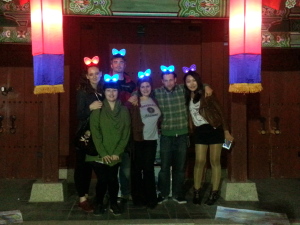
The gang at the fortress gates. Light-up ears were used as tracking devices to find each other in the big crowds :) Back row: Mairi and Jon. Front row L-R: Myself, Sarah, Ryan and June.
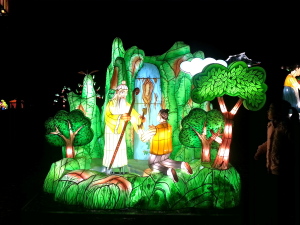
Many lanterns like this one depict Korean folk tales. This story is called “The Silver Axe and the Gold Axe.”
The history of the lantern festival is heavy, but also awesome because it honours an amazing woman in a country were the strength of women has not always been valued. The story behind the festival begins with the six year war that took place in Gyeongnam province in Korea, against Japanese insurgents from 1592-1598. Over the six years of battle, 70,000 Korean soldiers and government officials died protecting the city of Jinju from the Japanese army. Along with those 70,000 men, a woman named Ju Non-Gae also died and I will share her story with you now.
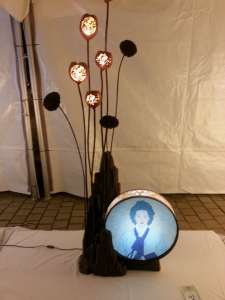
Some lantern artwork showcased at the festival. This one holds a portrait of the famous gisaeng, Non-Gae.
Non-Gae was a beautiful and famous gisaeng (a professional entertainer trained in the art of song, dance and story-telling, much like the Japanese geisha). During the second invasion of the Japanese troops, Non-Gae’s husband, general Choe Gyeong-Hoe was killed in battle. Already patriotic at heart, Non-Gae became even more determined to avenge her country once her spouse was slain. Non-Gae was often requested to attend dinners and entertain the Japanese generals during the time they occupied the fortress of Jinju. One of the top commanders of the Japanese army, Keyamura Rokusuke, took a liking to Non-Gae and she feigned interest to get her revenge.
One night she called him out to a cliff overlooking the Nam River and turned on her charm. After embracing him tightly, she locked her hands behind his back and fell backwards, throwing them both into the river to their deaths. The assassination was a big blow to the army and her suicide made her a martyr for sacrificing her life for her country.
During the war, lanterns were used as signals for the military to communicate with remote troops outside the fortress. After the war, the people of Jinju continued sending lanterns down the river every year to remember those who were lost in battle. Today, this tradition has evolved into the annual festival where lanterns are beautifully sculpted to honour their cultural history and the 70,000 men who fought for Jinju and for Non-Gae who did the same. You can still see the rock where she jumped to her death when walking the grounds of the Jinjuseong fortress. There is also a shrine to the memory of Non-Gae, called Uigisa (의기사), which means “the shrine of the righteous gisaeng.” Not far from the shrine is the rock where she jumped, which has come to be known as Uiam (의암), “the rock of righteousness.”

Some lanterns during the day. The character in the yellow and green jacket is a real person, getting his photo taken with the lantern men enjoying a lantern drinking party.
As my friends and I sat on the giant rock cliff enjoying the sunshine and wind off the river, I saw dozens of families walking down to the rock where Non-Gae leapt. As they passed her plaque, they retold the story to their young ones while the children stared down at the famous slab of stone. Every time I heard a mother tell her daughter that story, I felt proud to be a woman and honoured to have gotten the chance to meet Non-Gae, even if she was long gone. Not because she jumped and not just because she’s a woman; but because she was a strong woman who stood up for what she believed in, in a time where women’s thoughts had little value in matters of politics and war. Now she is a legend and I’m glad because I know that for every strong woman in any country’s history, there are hundreds more who we’ll never know but fought just as hard.
For those who are considering travel to Jinju for the festival next October, take note that it goes on for ten days, which covers two weekends. The second weekend of the festival has fireworks but both weekends host traditional music performances, a huge array of food tents, carnival-type games and the lit-up lanterns each night on the water and on land.
You can catch the bus to Jinju from the Express Bus Terminal subway stop which can be accessed through line 3, line 7 or line 9. One-way bus fare to Jinju will cost around 23,000 won (approx. $23 CAD). There are ample motels to stay in quite close to the festival grounds, but be sure to book in advance as it’s the busiest time of year for Jinju tourism.
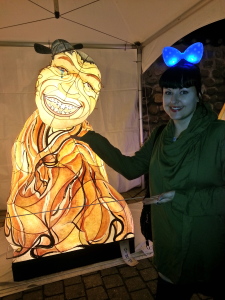
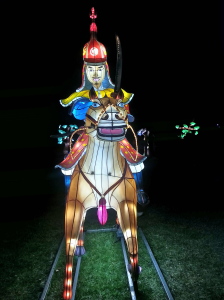
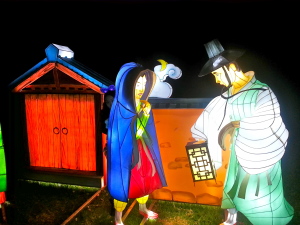
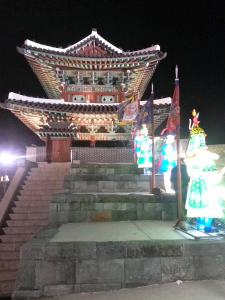
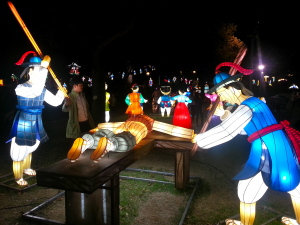
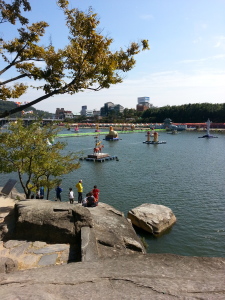
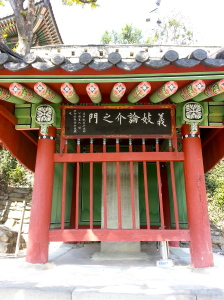
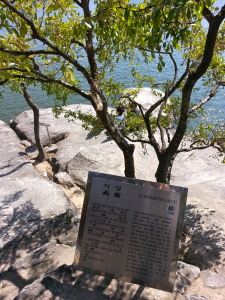
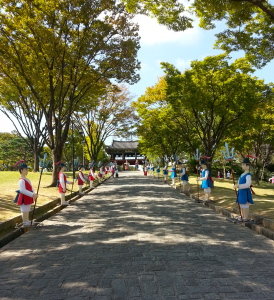

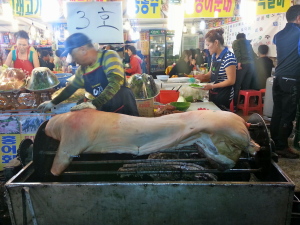
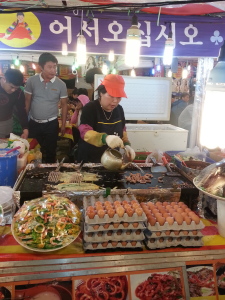

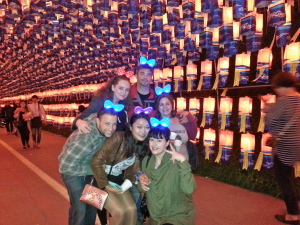
EXCELLENT review and history lesson – Thank You!! (and beautiful pictures!) :-)
Nice post. Let’s do it again next year!
Hi Sweetheart:
Another look at ancient history of Korea and Japan.And to walk in the very spot where the heroine once walked! Didn’t realize the japanese had been invading Korea since he late 1500s. thanks for info.
Luv youse–nana and gramp xxxxxxxxxxxxooooooooooo